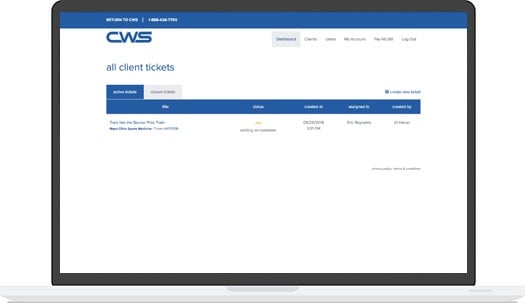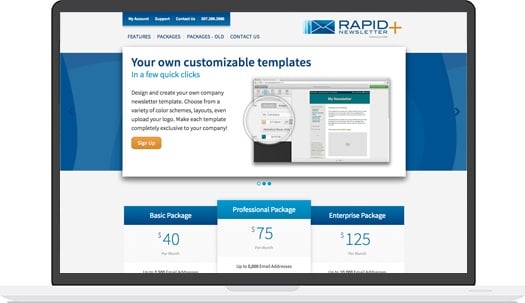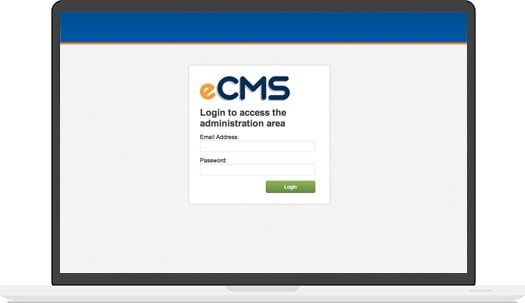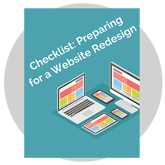Why aren’t people running madly to buy from you? I mean come on, you have this amazing service or product, you’re twenty notches better than your competitors, and you’re offering the best value at a fair price. You should have website leads coming out of your ears!
So what’s the deal? Get ready for some tough love on why your website is not giving you oodles of leads.
The truth is, it doesn’t matter if you’re offering the best product since sliced bread; the best leads don’t come easy. You’re fighting against competition, user's’ short attention spans, and the unlimited distractions of the web. That’s not all. Here are some fundamental reasons why you’re not getting website leads, and how you can overcome these issues:
Download the 22 Website Hacks To Drive Traffic, Leads & Sales Free eBook
#1 You’re Not Being Found
Plain and simple. If people cannot find your website, they’re not going to be visiting anytime soon. Search engines are not leaving you out on purpose. And no, your competitors aren’t paying them off to keep you on page 7 position 9.

Here are some other possibilities for why you are not being found:
- Your website is not properly optimized
- You’re not targeting the right audience
- Your website is using keywords that are either lacking or incorrect for your goals
- Your website is not providing updated, valuable content on an ongoing basis
- There is no clear, consistent marketing strategy
Be Found
Your first step to being found online is to develop your business goals, audience, and keyword strategy. From there, you can revolve your content and campaigning around this strategy.
In order to target the right audience, you’ll first need to create your company’s buyer personas. Here is our FREE Building a Buyer Persona Toolkit to help you get started.
Here are just some of technical steps needed to make sure search engines can find your site and index it properly. Some of these steps include:
- Submitting website sitemap to search engines
- Adding Meta titles and descriptions using best practices
- Ensuring that your text and photo content reflects the page titles and tags that are submitted to Google
- Having a mobile responsive site
New to search engine optimization (SEO)? Check out SEO Moz’ Beginner’s Guide to SEO
#2 Your Website Gives A Bad First Impression
It’s great when people find your website and actually click into it. However, these users are only visitors, not leads. Everyone has a level of expectations for what a site should look like today. If your website does not meet or exceed those expectations, those users will exit as quickly as they entered.

Here are some ways that your website may be leaving a bad impression:
- The website design looks underwhelming or outdated
- The website design looks overwhelming or confusing
- Your product or services are not clear on the homepage
- The website content falls short of expectations
- The website content is irrelevant to the problem the user is trying to solve
Give A Good First Impression
Learn about your user, and build a strategy around their specific needs and pain points. Your website design may not be perfect to start off with, which is why you’ll need to make continuous improvements and track real user data. There are plenty of tools out there to help you gauge the user experience. For example:
- Heatmap and scroll tools can tell you where users are clicking and scrolling on your pages
- User recordings can show you exactly how visitors are interacting with the website
- Google Analytics can monitor user behavior such as time spent on page, what pages were viewed, and much more
Once you’re able to track user experience on your website, you can make incremental improvements to create large impacts on lead conversions. The Growth-Driven Design methodology uses precisely this approach to continually improve your website so that you can make that great impression on your audience.
#3 You Will Take Website Traffic Any Way You Can Get It
Consider you get one million visits to your website and only ten visitors become qualified leads. Now let’s say you get one thousand visitors to your website and 100 of them convert to leads. Which scenario sounds better? The truth is that the quantity of visitor traffic to your website is not nearly as lucrative as quality visitor traffic.

Here are some ways your website is focusing too hard on traffic:
- The number of visitor sessions are high, but form submissions and online conversions are very low
- The bounce rates* on your website pages are 60% or higher
- Your website content and tags are stuffing as many keywords and locations in the text as possible
- Your paid ad campaigns are targeting too broad of audiences and keywords
*Bounce Rate is the percentage of single-page visits (i.e. visits in which the person left your site from the entrance page without interacting with the page. High bounce rates show that you hooked a visitor but may have failed to provide what they needed on that page.)
Focus on Content and Conversions
Make certain that your content is speaking to a specific buyer persona. Focus on guiding visitors to the right information that helps identify their problem and validates your company as having the best solution to that problem. Once your level of expertise is established, it’s time to guide them to convert via form submissions, downloadable offers, email lists, etc.
Inbound marketing is a highly successful marketing strategy that is completely customer-centric and will increase your chances of acquiring better leads, rather than just amass amount of traffic.
#4 You Put Too Much Work On The Visitor
According to Hubspot, the average web visitor will leave a webpage in 10-20 seconds. Within that time, you’ve must the user just the right amount of info they need and guide them quickly to the next step. If visitors are working too hard or taking too long to find the information they’re looking for, they’ll move on, and most likely never come back.

Guide Your Users to Convert
Call-to-action (CTA) buttons and links are your website’s best friends. They literally guide visitors to an action you want them to take. Clicking on a CTA can guide the user to:
- Fill out a form (immediate lead contact info!)
- Download an offer
- Subscribe to newsletter, event, webinar, etc
- Request appointment or consultation
- And so much more!
The best part about CTAs is that they’re flexible. Not receiving the best response from a CTA button? Change it up! Reword it, change the color, position it elsewhere, and so on. Test, test test, and keep testing to create that best CTAs that are acquiring leads for you.
Want to learn more about how to convert leads from your website?

.jpg?t=1533315998368) How-To Articles
How-To Articles Support Portal
Support Portal Webmail
Webmail Rapid Newsletter+
Rapid Newsletter+ eCMS
eCMS


 Alex Slack is a Project Manager and Content Creator. Her magic formula for marketing success is summarized by the 3Cs: communication, creativity, and care. She will help manage your project from the initial brainstorm session, to the height of your campaign and beyond. Let Alex guide you and help simplify this crazy world of digital marketing!
Alex Slack is a Project Manager and Content Creator. Her magic formula for marketing success is summarized by the 3Cs: communication, creativity, and care. She will help manage your project from the initial brainstorm session, to the height of your campaign and beyond. Let Alex guide you and help simplify this crazy world of digital marketing!
